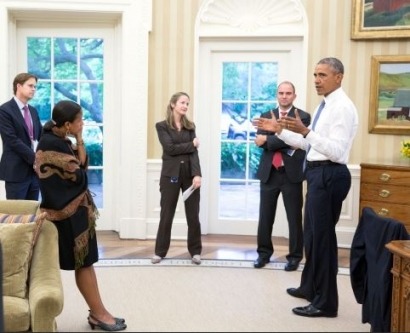
The rules, which are widely expected to be the subject of legal challenges, would bring dramatic change to the coal industry, shuttering scores of existing plants while freezing constructions of new ones.
Under the plan, the administration will require states to meet specific carbon emission reduction standards, based on their individual energy consumption.
The plan also includes an incentive program for states to get a head start on meeting standards on early deployment of renewable energy and low-income energy efficiency.
The new rules requires the nation’s existing power plants to cut emissions 32 percent from 2005 levels by 2030, an increase from the 30 percent target proposed in the draft regulation three years ago.
In a video released through the White House Facebook page and on You Tube, the president said, "Power plants are the single biggest source of harmful carbon pollution that contributes to climate change."
President Obama said this is because there are currently no federal limits on the amount of carbon such plans pump into the air.
But, he added, "Climate change is not a problem for another generation, not anymore.”
However, most of the provisions of the "Clean Power Plan" will be left to the next US president to enforce. States don't have to submit final plans explaining how they will comply with the rules until 2018, and some of its provisions won't go into effect until 2022.
That said, the policy changes are expected spur the development of solar, wind and other renewable energy assets, as that raise the share of power required to come from renewable sources from 22 percent to 28 percent.
President Obama is also expected to give states the option of joining an interstate cap-and-trade system, and will offer them financial benefits for doing so.
States that begin to cut carbon emissions by 2020 will be rewarded with carbon reduction credits that can be sold for cash in a cap-and-trade market.
For additional information:

